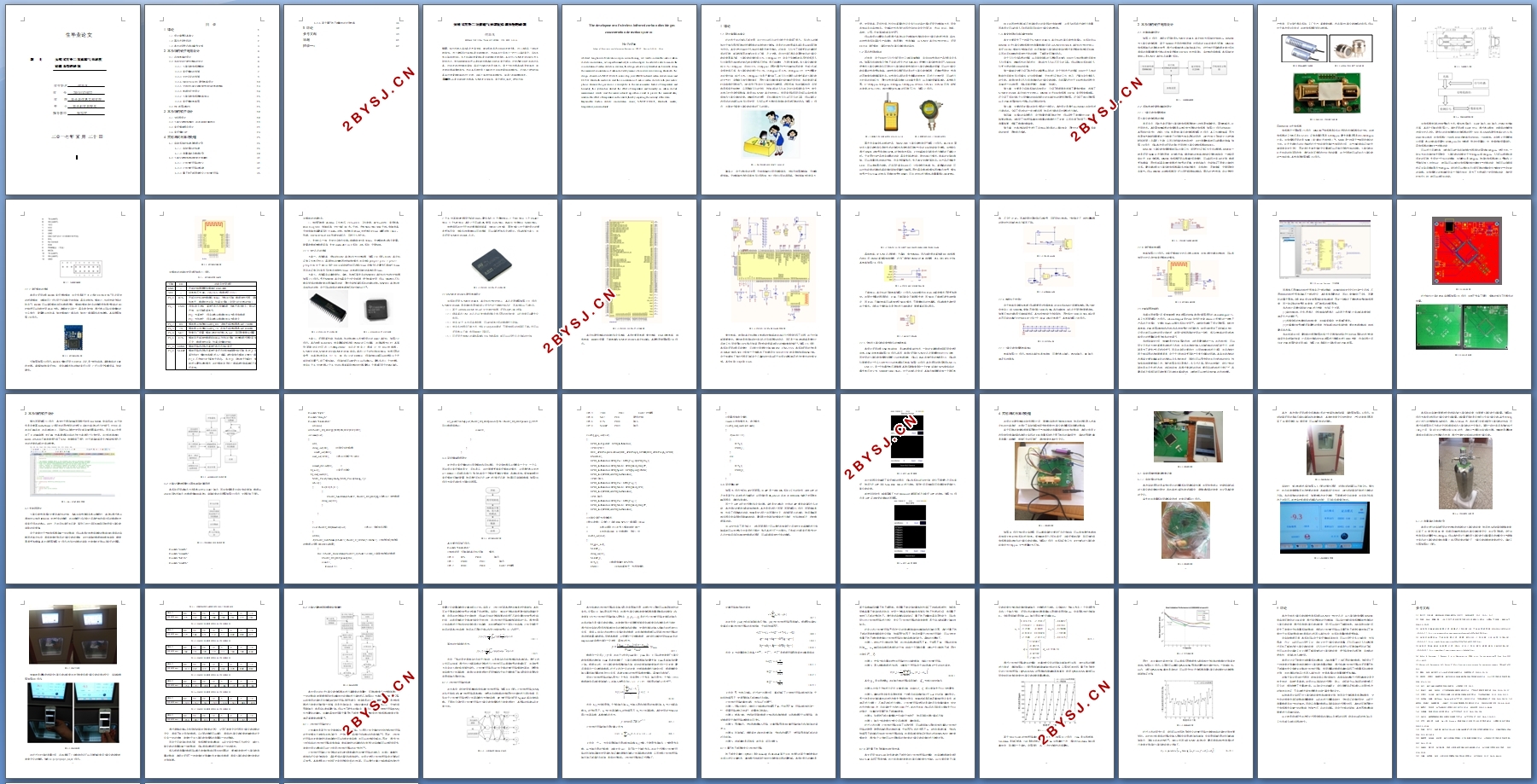无线式红外二氧化碳气体浓度检测系统的研制
无需注册登录,支付后按照提示操作即可获取该资料.
无线式红外二氧化碳气体浓度检测系统的研制(论文18000字)
摘要:长时间的不通风或是开启空调,都会导致屋内CO2浓度的升高,对人体造成一定程度的影响。为了能够实时监测二氧化碳的浓度,为此本设计实现了一种可以通过蓝牙,采用无线式接收的方式,用手机获取测量的二氧化碳的浓度的系统。本设计以STM32F103ZET6为主控制芯片,使用IRM300红外二氧化碳传感器和CC2541蓝牙模块,对室内的CO2气体进行采集,对浓度进行传输和读取,通过手机进行数字化显示。由于气体传感器容易受到温度,湿度的环境因素的影响,为此本系统研究了温湿度对CO2测量结果的影响。并利用了神经网络算法对测量的数据进行了处理,削弱了温度对结果的影响,提高了数据的精确度。
关键字:二氧化碳浓度传感器;STM32F103ZET6;蓝牙模块; 温度; 神经网络
The development of wireless infrared carbon dioxide gas concentration detection system
Abstract: Long hours of ventilation or open air conditioning, will lead to increase the indoor carbon dioxide concentration, will impact human body to a certain degree. In order to be able to monitor the concentration of carbon dioxide in real time, this design achieves a system that can be used to obtain the measured concentration of carbon dioxide by means of a wireless receiver using Bluetooth. This design is based on STM32F103ZET6 control chip, uses IRM300 infrared carbon dioxide sensor and CC2541 Bluetooth module to read the concentration of indoor carbon dioxide with your mobile phone. Because the gas sensor is susceptible to the environmental factors of temperature and humidity, this system has studied the effect of temperature and humidity on carbon dioxide measurement results. And the neural network algorithm is used to process the measured data, weakens the effect of temperature on the results, thereby improving the accuracy of the data.
Keywords: Carbon dioxide concentration sensor; STM32F103ZET6; Bluetooth module; temperature; neural network

目 录
1 绪论 1
1.1 设计背景及其意义 1
1.2 国内外研究现状 2
1.3 本文的研究内容与章节安排 3
2 本系统的硬件电路设计 4
2.1 总体电路的设计 4
2.2 系统中各个硬件电路的设计 4
2.2.1 二氧化碳传感器模块 4
2.2.2 蓝牙模块的选择 7
2.2.3 主控芯片的选择 9
2.2.4 STM32F103ZET6硬件电路设计 10
2.2.5 无线式二氧化碳浓度检测仪的电源电路 13
2.2.6 电源抗干扰设计 14
2.2.7 二氧化碳传感器电路接口 15
2.2.8 蓝牙模块电路图 15
2.3 PCB版图的制作 15
3 本系统的软件设计 18
3.1主流程设计 18
3.2 二氧化碳传感器的C语言读取计算程序 19
3.3 蓝牙模块程序设计 21
3.4 蓝牙模块APP 23
4 实验测试与算法处理 25
4.1 实验系统的搭建及数据记录 26
4.1.1 实验系统的搭建 26
4.1.2 测量实验及数据记录 28
4.2 二氧化碳传感器的温度补偿算法 31
4.2.1 小波神经网络的定义 31
4.2.2 小波神经网络的构建 32
4.2.3 量子粒子群原理优化小波神经网络 35
4.2.4 基于量子粒子群算法的补偿仿真 36
5 结论 38
参考文献 39
致谢 41
附录一: 42
